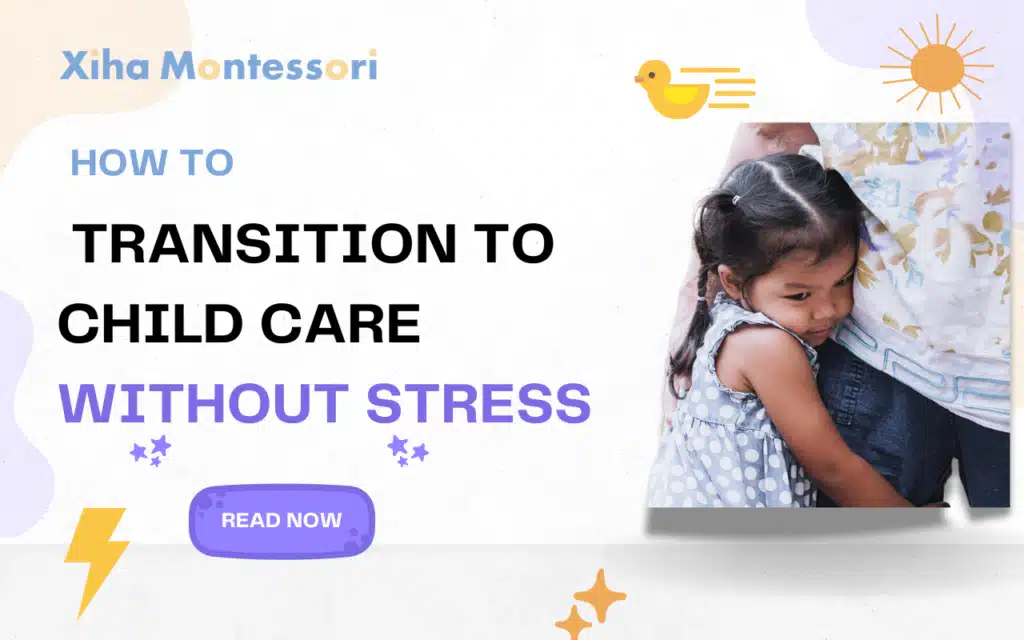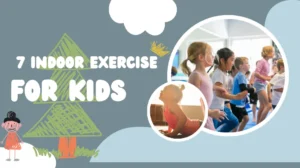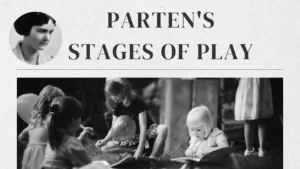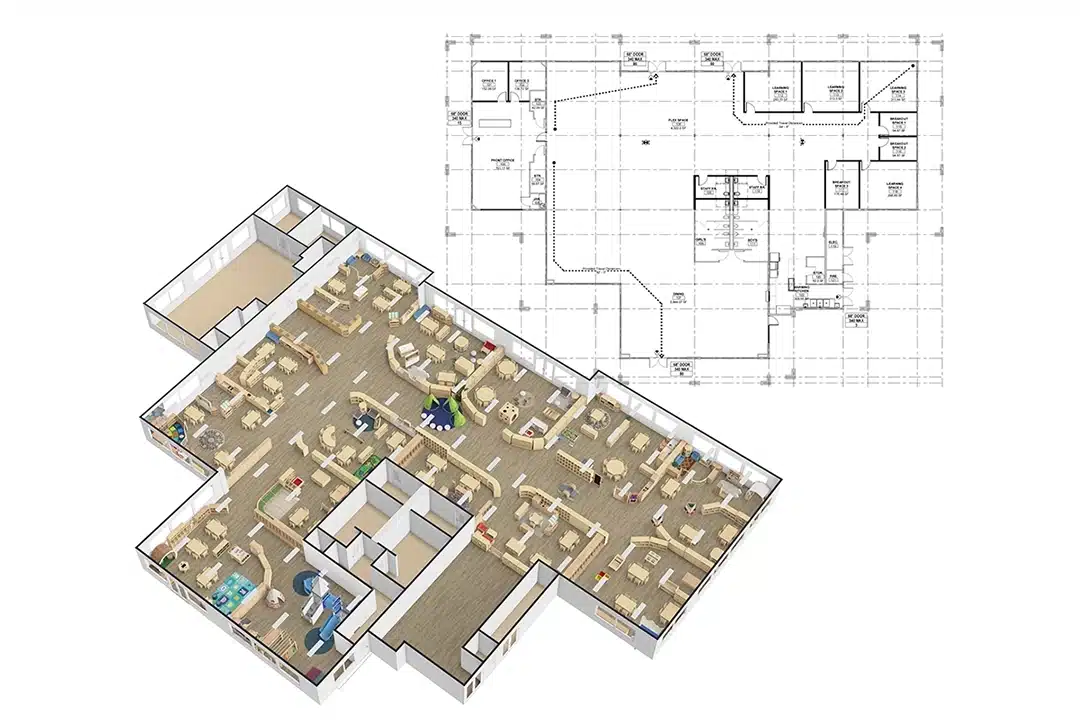Do you know that transition to childcare is the beginning of every child’s learning journey—but no one really tells you the rules? Should you start with one hour per day or go all-in from day one? Do you follow the “just drop her and go, even if she’s crying” method, or stay until your child feels safe enough to let go? And how do you know when it’s the right time to walk away?
There’s no one-size-fits-all strategy for transition to childcare. But most children benefit from simple, consistent routines: a clear goodbye ritual, a fixed time limit for drop-off, and a calm, confident parent. These small choices help a child feel secure—even when everything around them is changing.
Change is difficult for children. Let us understand the difficulties of transition to childcare and develop appropriate strategies to help children feel active and in control.
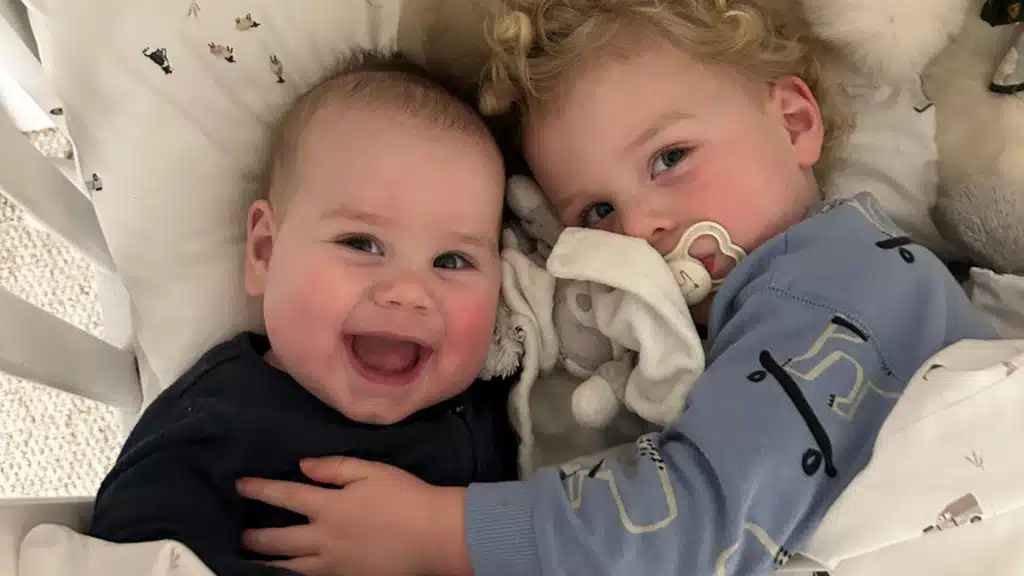
Understanding the Childcare Transition Journey
What are the difficulties in transitioning to childcare?
For many families, the transition to childcare marks a profound turning point—not only in a child’s life, but also in a parent’s identity. You’re not just handing your child over to caregivers. You’re handing over your trust, your fears, your daily habits, and a piece of your heart.
From the child’s perspective, this shift isn’t just about starting daycare. It’s about learning to feel safe with new people, in a new place, with unfamiliar routines. Imagine being placed in a brand-new environment where everything—from the smells to the voices to the lighting—is unfamiliar. It can feel overwhelming, especially for toddlers who rely heavily on routine and parental presence.
This daycare transition often brings:
- Separation anxiety (for both child and parent)
- Sleep or appetite disruptions
- Increased clinginess at home
- Fear of the unknown, especially in day care for 1 year olds or younger infants
- Difficulty bonding with unfamiliar caregivers
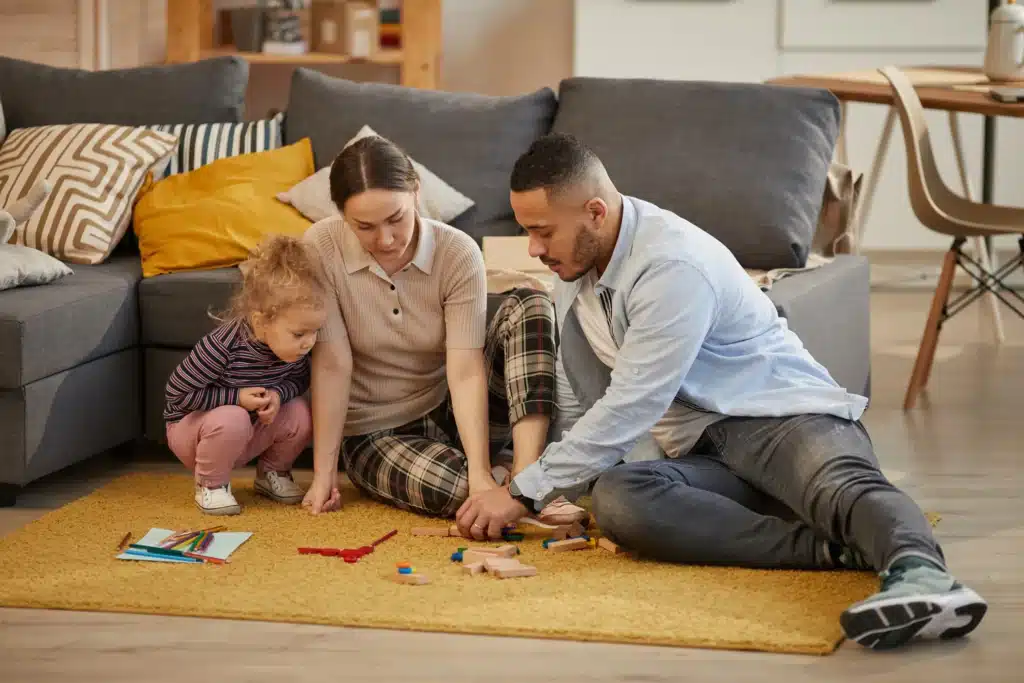
And while children are incredibly adaptable, transitions like this are rarely instant. Some cry at drop-off for days. Others bottle up emotions and express them only after a pickup. That’s why the care transition must be approached with structure, patience, and compassion. A rushed start can result in lingering stress, while a gradual and responsive approach builds emotional security and long-term resilience.
For younger babies (e.g., daycare 10 month old, 2 month old in daycare), transitions can be gentler if caregivers replicate elements from home: familiar nap routines, feeding schedules, and sensory comfort items. For toddlers (daycare 18 month old, transition to daycare 2 year old), predictability and control—like choosing their cubby or bringing a comfort toy—can make the unfamiliar feel manageable.
Understanding these layered challenges is the first step toward easing them. Transitioning into child care isn’t a “sink or swim” moment—it’s a process that calls for empathy, thoughtful preparation, and strong collaboration between home and the daycare.
Dealing with Guilt When Separating from Your Child
For many parents, the most difficult part of the transition into child care isn’t the child crying at the door—it’s the guilt that lingers after they leave.
That guilt is real. And it’s common.
You might be returning to work, managing other children, or simply needing time to rebalance your life. Still, doubts creep in:
Am I doing the right thing? Will they feel abandoned? Should I wait longer?
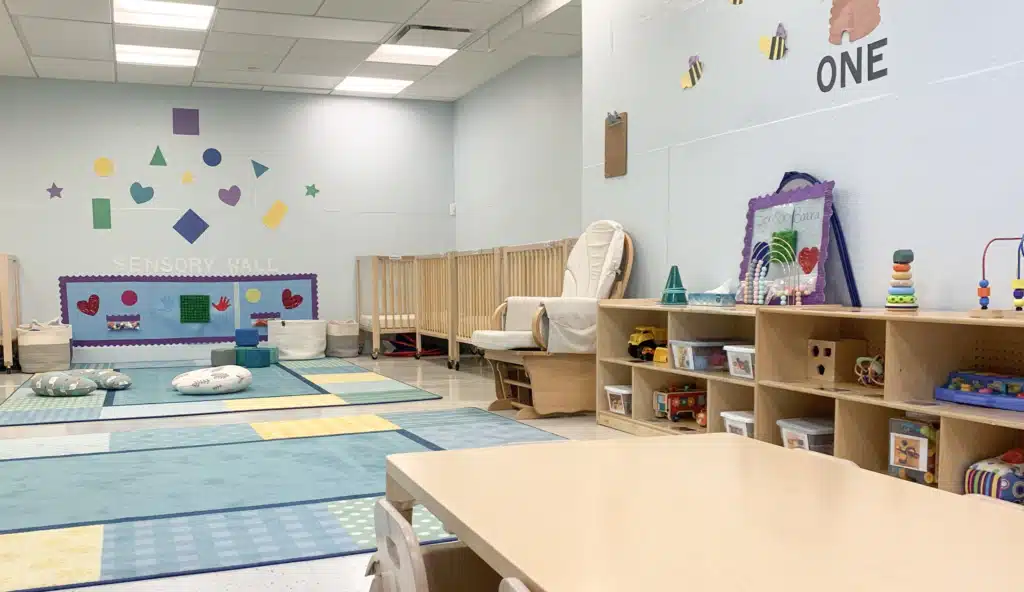
Society doesn’t help. Comments like “they’re only little once” or “I couldn’t leave mine so young” make parents question their decision—even when choosing child care is the most practical, or necessary, path forward.
But here’s the truth: choosing quality child care is not giving up your role—it’s expanding your child’s world.
A positive daycare connection builds confidence, teaches children how to trust others, and helps them grow socially and emotionally. It doesn’t replace you—it supports the relationship your child already has with you.
If you’re feeling guilt, don’t ignore it. Understand it as a sign that you care. Then shift your focus to action:
- Set a short, predictable goodbye routine
- Keep drop-off time calm and brief
- Communicate regularly with teachers during the daycare transition
- Remind yourself: secure children aren’t those who are never away from their parents, but those who know their parents always come back
Letting go for a few hours a day isn’t losing closeness. It’s helping your child build the skills to feel safe and confident in new spaces—while still knowing they’re loved.
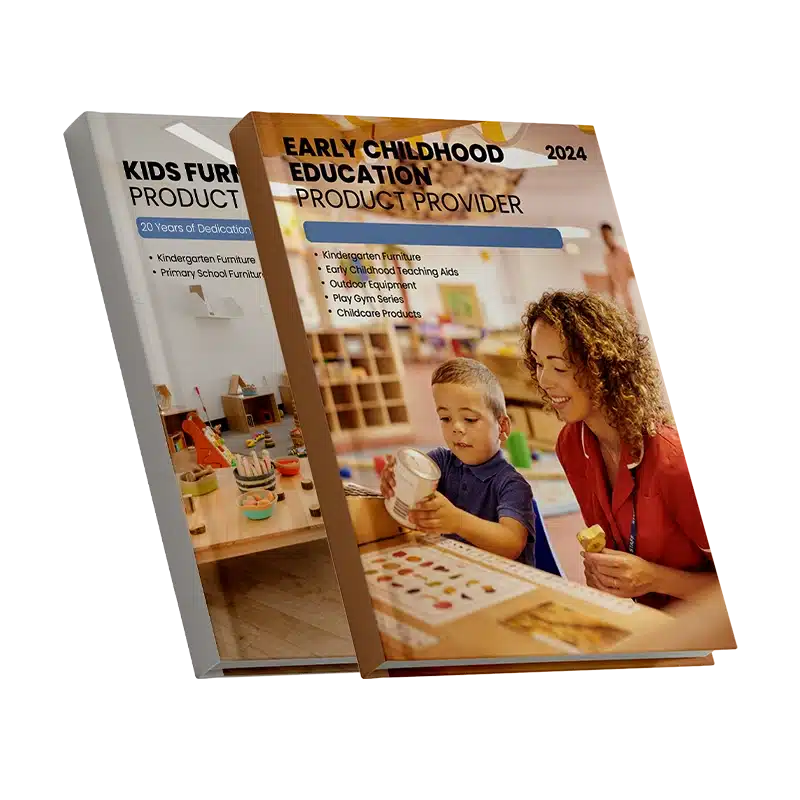
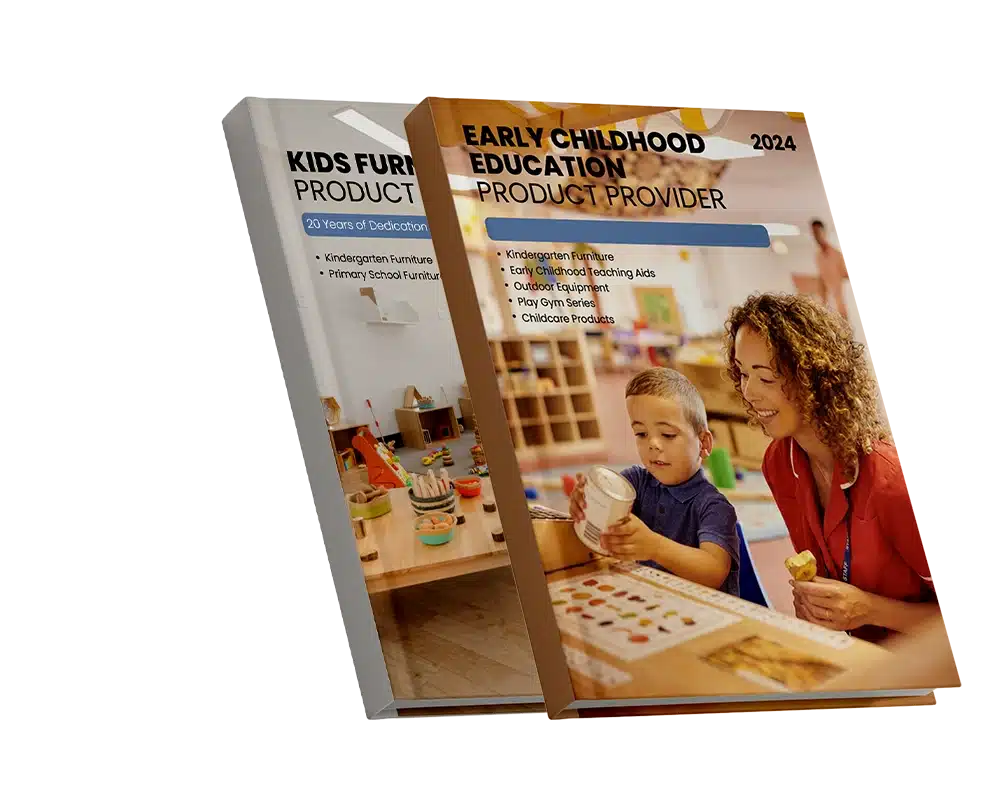
When Is the Right Time to Start Childcare?
There’s no universal “right” age for starting daycare, because every country, family, and child is different. The transition to childcare depends not just on age, but on emotional readiness, local policies, and what your family needs.
Here’s a quick breakdown by region:
United States:
With short parental leave (often just 6–12 weeks), many American families start daycare for 2-month-olds or infants under 6 months.
Canada:
Canadian families often enjoy 12–18 months of leave, allowing a slower transition into child care. Most kids start between 12 and 18 months, sometimes part-time at first.
Australia:
Australian parents may return to work anywhere from 3–12 months post-birth. Many use two-day daycare models to ease the transition to daycare for toddlers.
New Zealand:
In New Zealand, families often begin child care between 12–24 months, with a strong focus on relationships and gradual transitions.
No matter where you live, the “right” time to start child care depends more on emotional readiness than exact age. Globally, most children begin daycare between 12 and 24 months—earlier in the U.S. and UK, later in places like Canada, Germany, and Norway. A smooth transition to childcare is less about age and more about preparation, routine, and a responsive caregiving team that supports your child emotionally from day one.
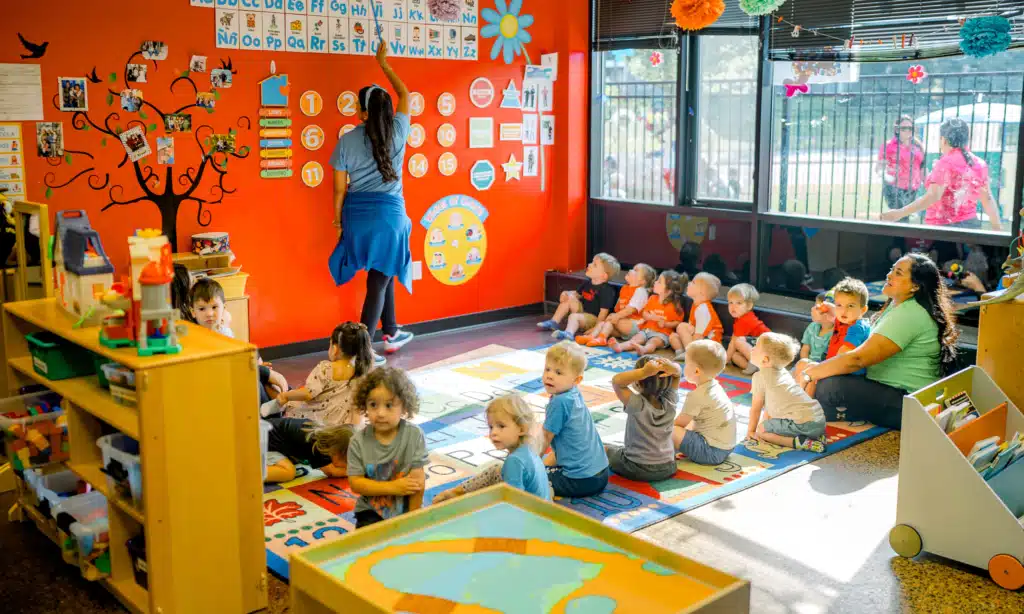
Practical Steps for a Smooth Transition to Childcare
Preparing Your Child for Care
A smooth transition to childcare begins before the first official day. Preparation isn’t just about packing a backpack—it’s about laying an emotional foundation of trust and familiarity.
Talk About What’s Coming
Children pick up on our tone, even if they don’t understand every word. Start talking about starting daycare as a positive, predictable part of their new routine.
Use phrases like:
“You’re going to a new school. There will be toys, books, and teachers who’ll take care of you.”
“After playtime and lunch, I’ll come back to get you.”
Avoid:
“I’m sorry, I have to leave you.”
“Be a good boy/girl.”
“Don’t cry.”
A confident tone reassures your child that the daycare is a safe place, not something to fear.
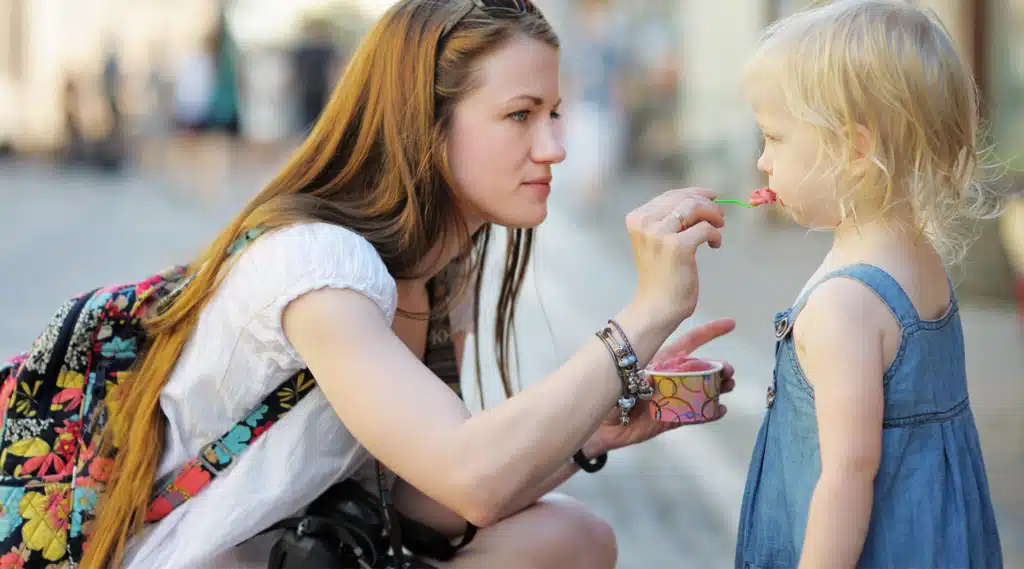
Visit the Childcare Program Before the First Day
Visiting the center is one of the most powerful things you can do to reduce first-day anxiety. This step builds familiarity with the people, sounds, and spaces your child will encounter.
If the center offers visiting procedures in daycare for preschoolers, take full advantage:
- Attend orientation days or short visits together
- Let your child play while you stay nearby
- Meet their assigned caregiver
- Show them their cubby, toy area, or nap mat
This shifts their experience from “unknown” to “recognizable,” which lowers emotional resistance.
Read Books and Role-Play Scenarios
Children process change through play. Read age-appropriate books or act out daycare routines using dolls or toys.
Some favorites include:
- Llama Llama Misses Mama
- Owl Babies
- The Kissing Hand
Pretend play ideas:
- Practicing drop-off and pickup
- “Feeding” dolls in a pretend cafeteria
- Acting out circle time or nap routines
These tools create mental rehearsal for what’s to come.
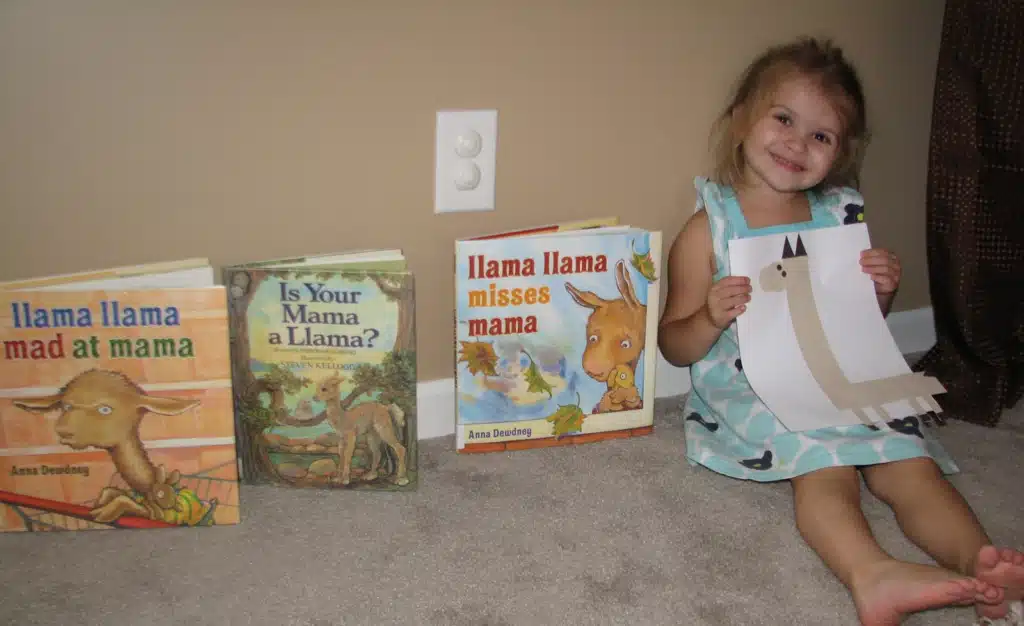
Align Your Home Schedule with the Daycare Routine
Many first-week meltdowns happen because of timing misalignment—for example, if a child normally naps at 2:00 p.m. but the daycare naps at 12:30 p.m.
1–2 weeks before the start:
- Adjust wake-up, nap, and meal times
- Introduce a morning prep routine
- Practice getting ready in the same order as daycare mornings
This way, their internal rhythm won’t be shocked on day one.
Practice Short Separations
If your child has always been with you or family caregivers, separation will likely feel intense. So start small.
Gradual steps to build confidence:
- Leave the room for 5–10 minutes while your child plays
- Let a grandparent or trusted babysitter watch them for short periods
- Use consistent goodbye routines at home (e.g., “I’ll be back after your snack!”)
This practice reinforces the idea that separations are safe and temporary—the core emotional skill for child care transitions.
Prepare a Comfort Item for Day One
Children often benefit from a “transitional object”—something that connects them to home while they’re in daycare.
Great options:
- A soft toy or blanket
- A family photo in a zippered pouch
- A special bracelet or “hug button” on their clothing
Let your child pick the item so it feels meaningful. Tell them, “This is for when you miss me.”
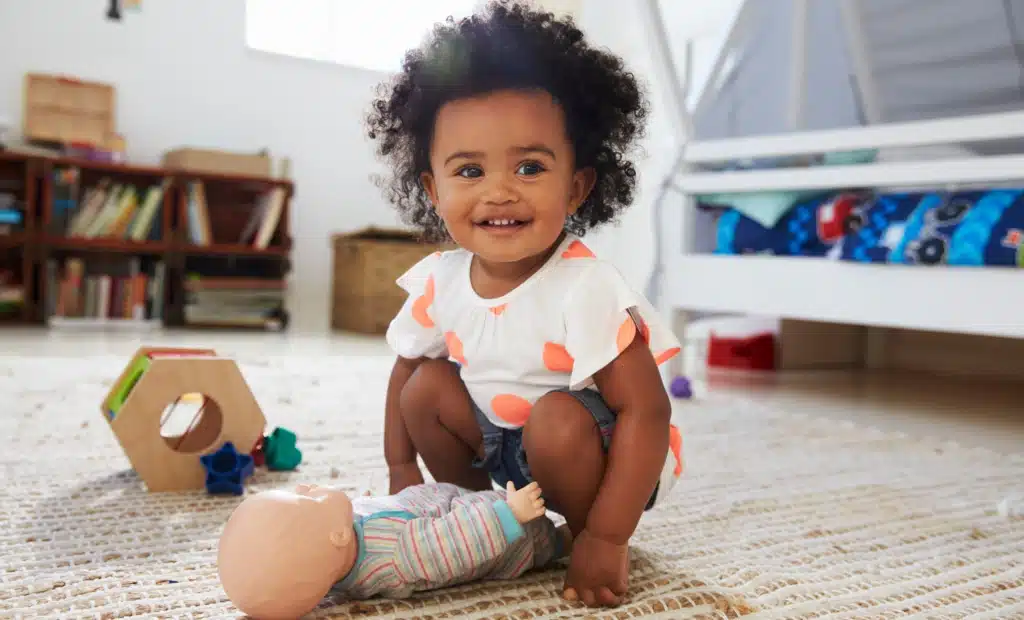
Manage Your Own Emotions
Children are emotional mirrors. If you look nervous, sad, or hesitant at drop-off, they’ll sense it—and panic.
Prepare yourself as much as you prepare your child:
- Avoid apologetic language
- Practice your own short goodbye in the mirror
- Visualize a successful separation before the big day
“You’re safe. You’re going to have fun. I’ll see you after lunch.”
Say it with confidence—even if you’re crying in the car afterward.
Build a Predictable Aftercare Routine
After the first few days in childcare, your child will likely be tired, overstimulated, and emotionally drained—even if they had a great day.
Plan calm, comforting activities at home:
- Quiet play or storytime
- Familiar meals and early bedtime
- Simple language to validate their effort (“You had a big day! I’m proud of you.”)
This end-of-day rhythm reaffirms the safety of home—and makes it easier to return to child care the next day.
Adjusting to Child Care
Once the first day arrives, structure, consistency, and emotional attunement are key. Here are 10 professionally recommended tips—ordered by what to do before, during, and after drop-off—to support a smooth daycare transition.
Establish Predictable Routines Early
Children thrive on rhythm. Begin setting consistent wake-up, meal, and nap times that match the daycare schedule at least a week before starting.
Choose the Right Time to Start
If possible, avoid transitions during significant life changes (a new sibling, recent move, etc.). Pick a stable time when your child is healthy and rested.
Ease in Gradually
Start with part-day attendance. Many parents use two-day daycare in the beginning or shorter hours for the first week. This gives the child time to build trust without being overwhelmed.

Use a Goodbye Ritual
Design a consistent, calm goodbye. A hug, memorable phrase (“See you after lunch!”), And a wave at the door is a simple, powerful cues that help children regulate emotionally.
Keep Drop-Off Short and Sweet
Don’t linger. A confident, brief goodbye shows your child that you trust the setting, and they can too. Unsure parents create unsure children.
Communicate with Teachers
Talk to caregivers about your child’s temperament, routines, and triggers. The more they know, the better they can support your child during the care transition.
Create Emotional Anchors
Let your child bring a “transition object” (comfort toy, family photo, etc.). Familiar items help bridge the emotional gap between home and child care.
Stay Calm During Separation
Even if your child cries, avoid panic. Stay calm, speak gently, and trust the caregivers to take over. Your body language becomes their emotional reference point.
Check In—but Don’t Over-Check
It’s okay to call or message during the day, but don’t overdo it. Constant checking adds to your anxiety and doesn’t help the child. Let staff focus on bonding.
Stick With It
Avoid taking “breaks” during the first few weeks unless necessary. Consistency is the foundation of adaptation. Even if it’s hard, keep going.
These 10 tips are core strategies for reducing friction during the transition into child care. They build security, strengthen trust, and allow children to settle into their new environment with confidence.
The End of the Day Transition
Provide Extra Support at Home After the First Day
The first day of childcare isn’t over when you pick up your child—it continues into the evening at home. The emotional weight of separation, new people, unfamiliar spaces, and routine changes often catches up after the excitement fades.
Why Home Support Matters
Most children hold in their emotions during the day, then release them when they’re back with their parents. This is a healthy response, but it can look like:
- Sudden clinginess
- Meltdowns over small issues
- Refusing meals or bedtime routines
- Overstimulation or withdrawal
This doesn’t mean the daycare transition is failing. It means your child trusts you enough to let their guard down.
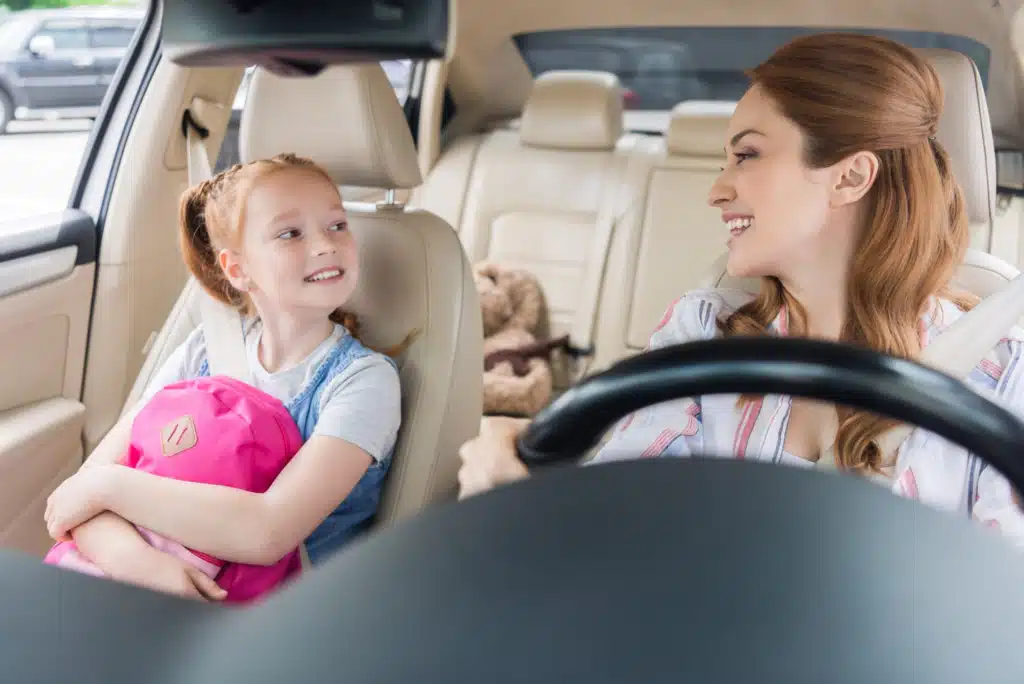
What to Do at Home
1. Create a calm environment
Lower the lights, reduce noise, and allow quiet play or cuddling.
2. Offer physical reassurance
Extra hugs, lap time, or babywearing help re-regulate emotional safety.
3. Avoid over-questioning
Instead of asking, “Did you have fun?”, try “I’m so happy to see you” or “You worked hard today.”
4. Stick to evening routines
Predictable bath, dinner, and bedtime routines restore a sense of control.
5. Normalize their feelings
Say things like, “It’s okay to feel tired after a big day” or “You were very brave today.”
This stage is all about reconnecting. The more emotionally safe your child feels at home, the easier it becomes to face the next day with confidence.
How to Know If the Transition Is Going Well (Weeks 1–3)
As the days progress, you’ll start noticing changes—both good and bad. It’s important to know which ones are part of a healthy transition into child care, and which may signal the need for more support.
What a Positive Transition Looks Like
1. Short-lived crying at drop-off
It’s normal for a child to cry when saying goodbye, but if they calm down within 5–10 minutes, that’s a healthy sign.
2. Building routine comfort
They begin to nap, eat, and participate in daycare activities for one-year-olds or toddlers.
3. Connecting with a caregiver
Your child starts bonding with one adult—this “safe base” helps them settle emotionally.
4. Talking about daycare at home
They mention a teacher, song, friend, or toy they remember—this shows growing trust and emotional processing.
5. Improved independence
They begin to separate more easily and explore the environment on their own.
Signs That May Need Attention
1. Prolonged distress
Crying for most of the day beyond the second or third week may indicate a deeper discomfort.
2. No connection with staff
If your child avoids or shows fear toward all caregivers, that may be a red flag.
3. Ongoing sleep or eating disruptions
Some disruption is normal, but if patterns worsen over time, reassess emotional wellbeing.
4. Regressive behavior at home
Clinginess, bedwetting, aggression, or excessive tantrums might show unprocessed stress.
5. Dread before daycare
If your child resists getting dressed, cries at the mention of daycare, or appears panicked every morning, it’s time to evaluate further.
What to Do If You’re Unsure
Consider slowing the schedule: Shorter hours or gradual increase may help sensitive children.
Talk to caregivers: Ask how your child behaves after drop-off. They often calm quickly even if you leave in tears.
Review the environment: Ensure it’s consistent, nurturing, and calm.
Stay consistent: Avoid frequent absences during the early transition stage.

Transition Plans: Phase Your Child’s Transition
If the child care center allows, using a phased transition plan is one of the best ways to support your child’s transition to childcare. Rather than moving directly into full-day care, a gradual start helps children feel more secure, parents feel more confident, and teachers better understand each child’s emotional rhythm.
Here’s an example of a 5-day daycare transition plan:
| Day | Transition Activity |
|---|---|
| Day 1 | Parents and their child visit the daycare together for 1 hour. The child explores while the parent stays nearby. |
| Day 2 | Parent drops off the child for 1–2 hours of playtime, building comfort with the caregivers. |
| Day 3 | Child stays for 3–4 hours, including snack or lunch—marking their first experience of the daily routine. |
| Day 4 | Child stays through nap time, becoming familiar with mid-day transitions. |
| Day 5 | Child stays for a full day of care, including meals, nap, and all structured activities. |
These transition into child care plans give children time to observe, absorb, and begin trusting caregivers before they are expected to manage a full day. For younger children—such as those in daycare for 1 year olds or 18-month-old daycare settings—phased transitions can dramatically reduce separation anxiety and emotional stress.
Every child and every family is different. Teachers should feel empowered to adjust transition plans as needed. Some children may need an extra day at a certain stage, while others might move ahead more quickly.
Go Easy on Yourself
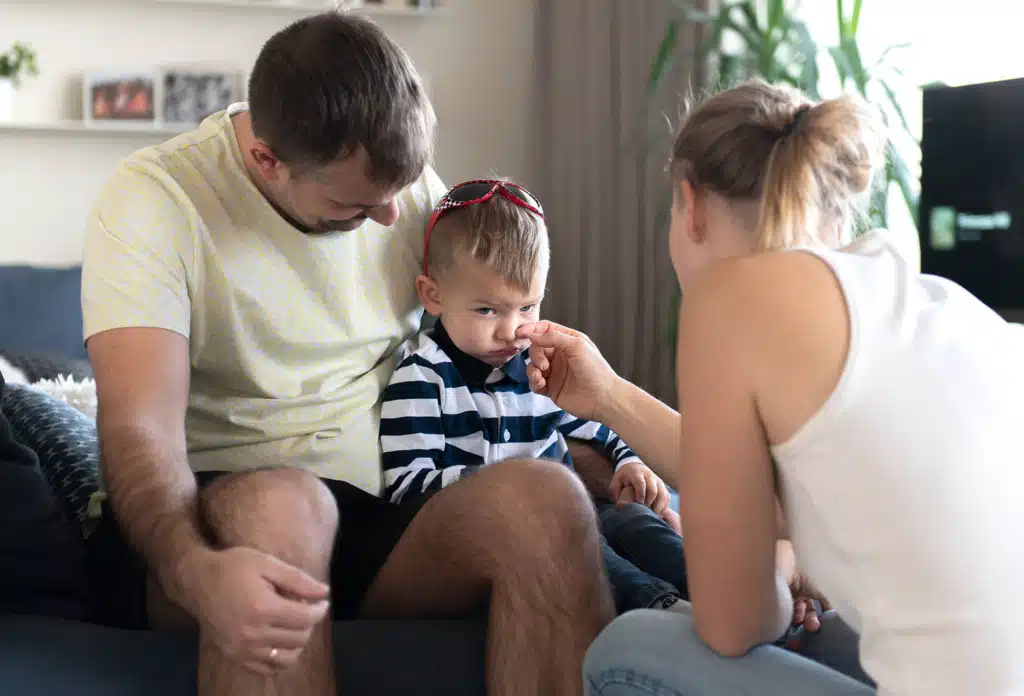
The transition to childcare isn’t just a milestone for your child—it’s a big emotional shift for you, too. Whether you’re a parent leaving your baby for the first time, or a school owner watching families navigate those tearful drop-offs, remember this: it’s okay if it feels hard.
You might feel guilty, second-guess your decision, or wonder if you’re doing the right thing. That’s normal. Supporting a daycare transition takes patience, flexibility, and emotional energy—for everyone involved.
But each day your child spends in a safe, nurturing child care environment, they’re learning to trust, adapt, and grow. And each day you show up, even with doubts, you’re teaching them strength and love.
So if today was rough—go easy on yourself. Tomorrow is another chance to get it right.
The Role of Environment: Why Furniture and Space Matter
While emotional support and routine are essential for a successful transition to childcare, there’s another silent partner that plays a powerful role in this process—the physical environment.
The furniture, layout, lighting, and materials in a childcare setting can either trigger anxiety or foster calm and confidence. As a supplier of Montessori and Reggio-inspired furniture, we at Xiha Montessori see this every day: when the space is thoughtfully designed, the child’s daycare transition becomes smoother, faster, and more emotionally secure.
Let’s explore why.
Furniture That Fits Builds Confidence
Children feel most confident in environments that are built for them, not just around them.
- Matches their height and reach
- Allows for safe independence
- Gives them ownership of their space
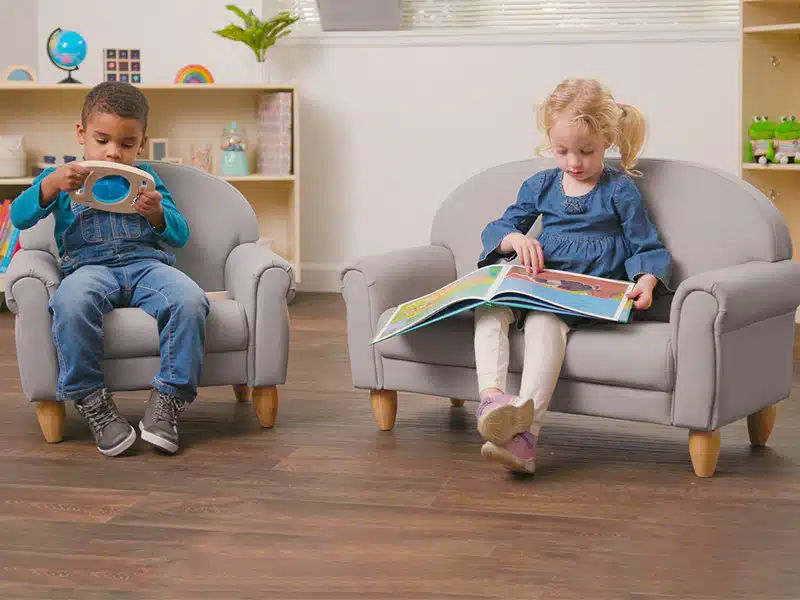
When a toddler can pull out their own chair, access a shelf, or place their shoes in a cubby without adult help, they feel competent. That sense of mastery directly reduces anxiety during the transition into child care.
Soft Transitions Require Soft Toys
The toys children interact with during the daycare transition play a bigger role than many realize. Loud, overstimulating, plastic-heavy toys can heighten stress, especially during the early days of adjustment. In contrast, soft, natural toys send a powerful emotional message: “This is a safe, calm place.”
Key elements of calming toy choices:
- Natural materials like wood or fabric over synthetic plastic
- Soft textures and rounded edges
- Quiet, open-ended toys that invite imagination rather than overwhelm
- Neutral or earth-tone colors to reduce sensory overload
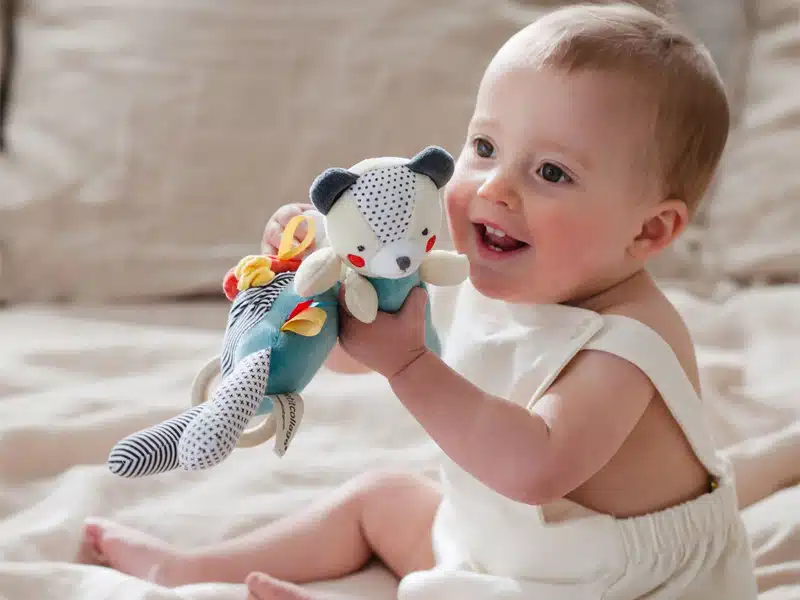
Many daycare toys on the market prioritize color and complexity over emotional impact. But especially during the first days of child care, emotional safety starts with what’s in a child’s hands. Toys that feel familiar, safe, and manageable can calm the nervous system—and make the daycare transition more peaceful for both children and caregivers.
The Nap Environment
One of the hardest parts of the daycare transition is sleeping in a new environment. For infants and toddlers especially, a chaotic or bright nap room can lead to sleep resistance—and tired children struggle to adjust.
Best nap space:
- Soft, indirect lighting
- Individual sleep mats or cribs spaced comfortably
- Sound-absorbing rugs or curtains
- White noise or calming music (if culturally appropriate)

When children sleep well at daycare, they behave better, eat better, and adjust faster. Furniture and space design directly impact that success.
FAQ: Common Questions About the Daycare Transition
1. How long does the daycare transition take?
Most children take 1 to 3 weeks to adjust to child care, though some may need longer. A smooth daycare transition depends on age, temperament, the quality of the environment, and how gradual the separation is introduced.
2. How do you know whether your child has settled well at child care?
Signs of a successful transition to childcare include:
- Crying less or calming quickly after drop-off
- Engaging with caregivers and activities
- Eating and sleeping better over time
- Talking about daycare at home
If your child shows curiosity and comfort—even if they still cry briefly at drop-off—they’re likely settling well.
3. Is it better to start daycare gradually?
Yes. A gradual transition—starting with shorter hours or two-day daycare per week—can reduce anxiety and build trust. This approach works especially well for younger children or those attending day care for 1 year olds.
4. Is 12 hours too long for daycare?
For most children, 12 hours in daycare is considered excessive unless necessary. Long stays can lead to fatigue, overstimulation, and emotional stress. If extended hours are needed, ensure the environment supports rest, rhythm, and emotional care throughout the day.
5. How do I know if my child is unhappy at daycare?
Signs that your child may be struggling with the daycare transition include:
- Prolonged crying during the day
- Refusal to attend
- Withdrawal or aggression at home
- Regression in sleep, eating, or behavior
- No signs of daycare connection with caregivers after 2–3 weeks
Talk to the staff if these signs persist. Adjustments or additional support may be needed.
6. How does changing daycare affect child development?
Changing daycare can temporarily disrupt a child’s sense of stability, especially if they’ve already formed strong bonds. However, when handled with care and communication, most children adjust well. The key is to prepare for the transition just as carefully as the first time, especially with toddlers.
Conclusion
For parents, the daycare transition can feel overwhelming—like you’re handing your child over to a world you can’t fully control. But what your child needs most isn’t perfection. They need consistency, warmth, and the quiet message that change can be safe. This transition is not just about separation—it’s about building the capacity to trust new people, new places, and new rhythms.
A thoughtfully prepared space plays a bigger role than you might think. The way a child-sized chair supports their independence, or a familiar nap corner offers peace, can make the difference between stress and comfort. That’s why many childcare centers choose partners like Xiha Montessori, a trusted manufacturer of early childhood furniture, to help make these first environments truly supportive. With the right people, structure, and space around them, children don’t just get through the transition—they grow through it.

